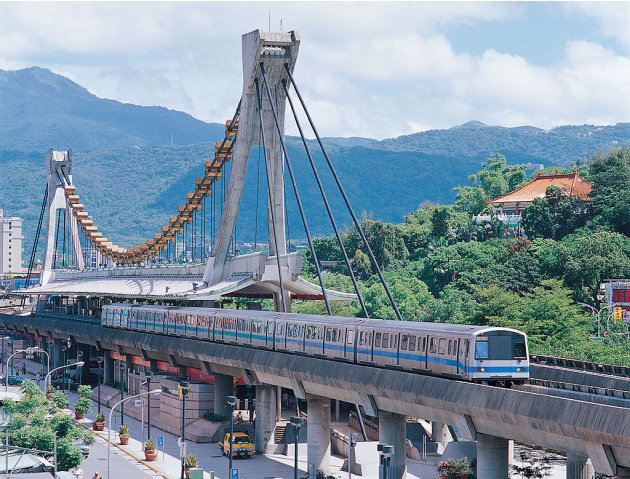
Taipei
The Taipei Metro, more commonly known as the MRT (Mass Rapid Transit or Metro Rail Transit) or formally as the Taipei Rapid Transit System, is a rapid transit system serving metropolitan Taipei in Taiwan. The system is built and operated by the Taipei Rapid Transit Corporation (TRTC) and consists of 96 stations and 110.1 km (68.4 mi) of revenue track. The system carried an average of over 1.66 million passengers per day in December 2011.
Photo by Yulu at en.wikipedia [Public domain], from Wikimedia Commons
less
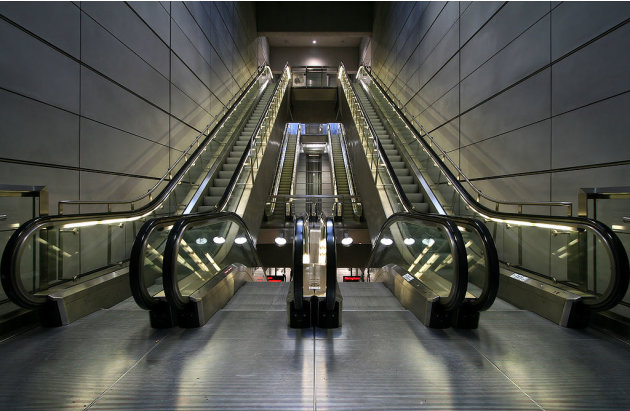
Copenhagen
The S-train network is a combined urban rapid transit and suburban rail network serving Metropolitan Copenhagen, Denmark. It connects the city center with the inner suburbs of Copenhagen, and has close to half of the stations within the urban city. The first line was opened in 1934. Today the network forms the heart of the public transportation infrastructure in the city, serving more than 357,000 passengers a day.
Photo by Stig Nygaard from Copenhagen, Denmark [CC-BY-2.0 (http://creativecommons.org/licenses/by/2.0)], via Wikimedia Commons
less
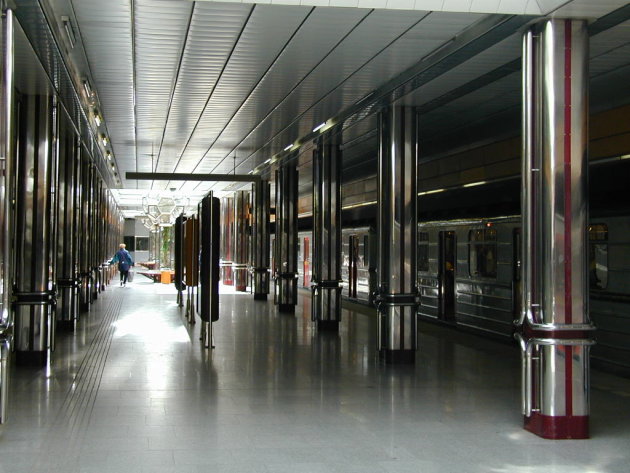
Prague
The Prague Metro comprises three lines, each of which is represented by its own colour on the maps and signs: Line A (green), Line B (yellow) and Line C (red). There are 57 stations in total (three of which are transfer stations) connected by nearly 60 kilometres of mostly underground railways. The metro service operates between 4-5 am till midnight from Sunday till Thursday (on Friday and Saturday the last trains journey start at 1am), with about two- to three-minute intervals between trains during rush hours. Over 500 million passengers use the Prague Metro every year.
By Che via Wikimedia Commons
less
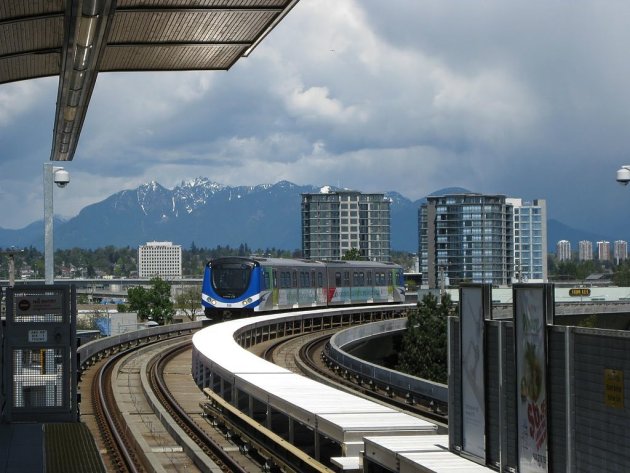
Vancouver Sky Train
SkyTrain is a light rapid transit system in Metro Vancouver, British Columbia, Canada. SkyTrain has 68.7 km (42.7 mi) of track and uses fully automated trains on grade-separated tracks, running mostly on elevated guideways, which gives passengers views across the city and helps SkyTrain to hold consistently high (over 95%) on-time reliability.
Photo by Haizhebear (Own work) [CC-BY-SA-3.0 (http://creativecommons.org/licenses/by-sa/3.0)], via Wikimedia Commons
less
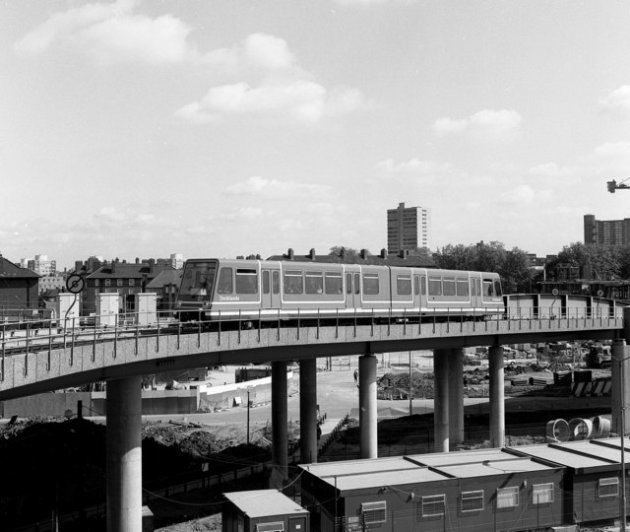
Docklands Light Railway
The Docklands Light Railway is an automated light metro or light rail system opened in 1987 to serve the redeveloped Docklands area of London. It reaches north to Stratford, south to Lewisham, west to Tower Gateway and Bank in the City of London financial district, and east to Beckton, London City Airport and Woolwich Arsenal. This was the first automated regular train service in London. The system is not entirely unmanned, though it uses minimal staffing on board trains and at major interchange stations. This has led to proposals to fully automate the Tube, which also would increase service capacity.
Photo by Dr Neil Clifton [CC-BY-SA-2.0 (http://creativecommons.org/licenses/by-sa/2.0)], via Wikimedia Commons
less
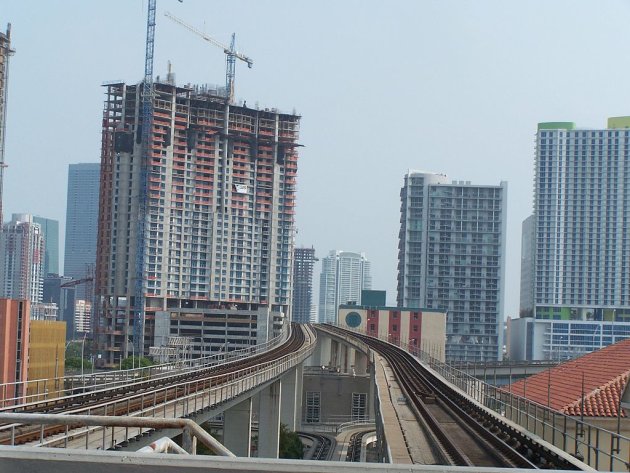
Miami
The Miami Metrorail, officially Metrorail and commonly called the Metro, is the heavy rail rapid transit system of Miami, Florida, United States, serving the Greater Miami area. The Metro is operated by Miami-Dade Transit (MDT), a departmental agency of Miami-Dade County. Opened in 1984, it is Florida's only rapid transit metro system, and is currently composed of 22.4 miles (36.0 km) of line with 22 stations.
Photo by Miami92 at en.wikipedia [Public domain], from Wikimedia Commons
less
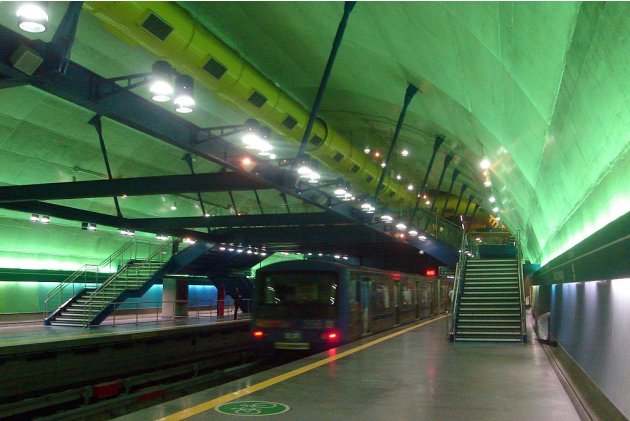
Sao Paulo Brazil
The São Paulo Metro is the principal rapid-transit system in the city of São Paulo and the largest in Brazil. It is also the second largest system in South America and the third largest in Latin America, behind Mexico City and Santiago. The Companhia do Metropolitano de São Paulo - Metro was founded on 24 April 1968. Eight months later, work on North-South line was initiated. Today, São Paulo Metro is considered the best rail transportation system in the Americas. The Metro has a length of 74.3 kilometres (46.2 mi), distributed into five lines with 64 stations.
Photo by Luís Guilherme (http://www.flickr.com/photos/pereira/3248917758/) [CC-BY-SA-2.0 (http://creativecommons.org/licenses/by-sa/2.0)], via Wikimedia Commons
less
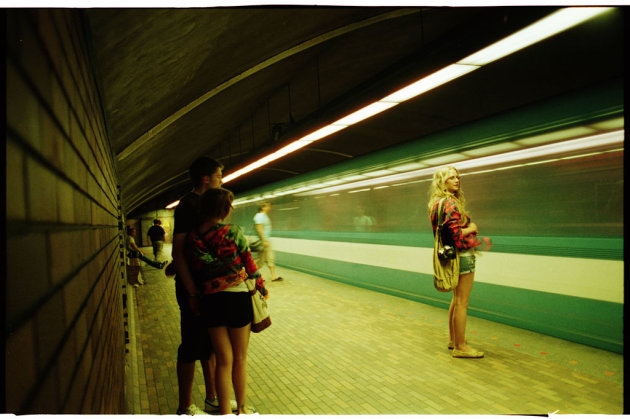
Montreal
The metro system is Canada's busiest subway system in total daily passenger usage, serving an average of 1,111,700 daily passengers on an average weekday (as of Q1 2011). In 2011, 308.7 million riders (transfers not included) used the Metro. According to the STM website the metro system has transported over 7 billion passengers as of 2010, roughly equivalent to the world's population.
Photo by Mike Babiarz ([1] Uploaded by Skeezix10http://start.producersdesktop.yahoo.com:9999/v1/index.html#bugreporter_hide00) [CC-BY-2.0 (http://creativecommons.org/licenses/by/2.0)], via Wikimedia Commons
less
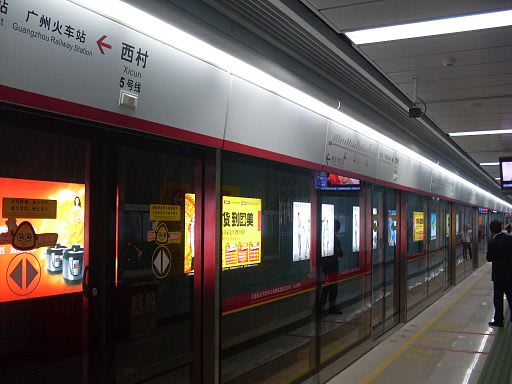
Guangzhou Metro
Daily service hours start at 6:00 am and end at midnight, and ridership averages 5 million. Having delivered 1.64 billion rides in 2011, Guangzhou Metro is the sixth busiest metro system in the world. Guangzhou Metro operates 144 stations, including 14 interchange stations, and 236 km of tracks.
Photo by TraineeCupid (Own work (Taken by me)) [Public domain], via Wikimedia Commons
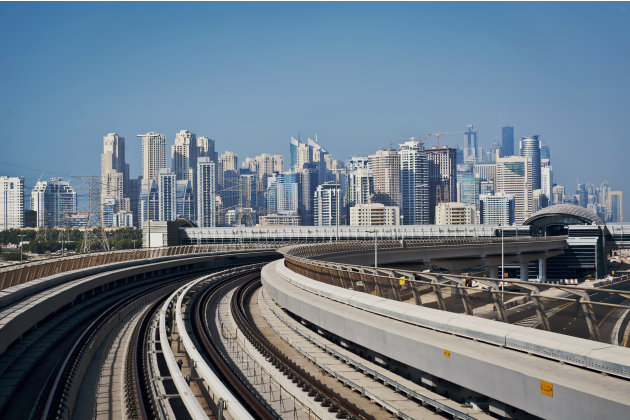
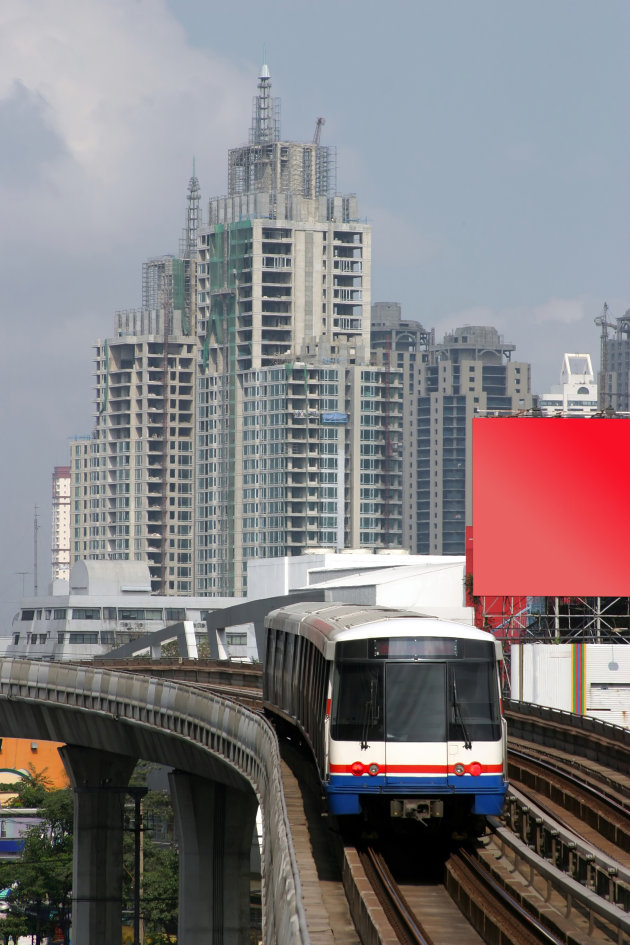
The Dubai Metro is a driverless, fully automated metro rail network in the United Arab Emirates city of Dubai. The Red Line and Green Line are operational, with three further lines planned.
Considering that Bangkok is a low-lying plain which is prone to flooding, all of the Metro's station entrances are raised about one metre above the ground level and are equipped with built-in floodgates in order to avoid water inundating the system.
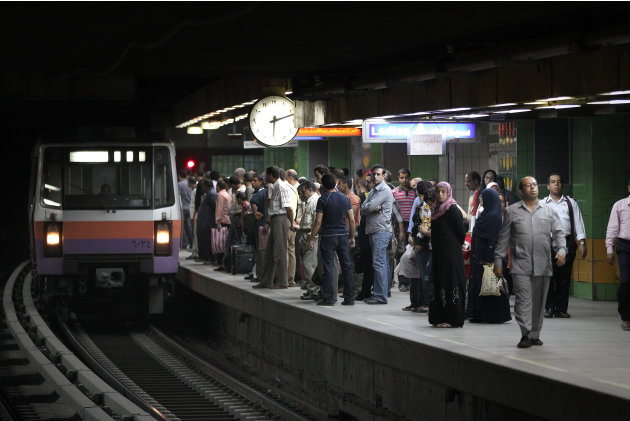
Cairo Metro The Cairo Metro in Egypt is the first of only two full-fledged metro systems in Africa, and the Arab World. The system consists of three operational lines. On all Cairo metro trains, the middle two cars (4th and 5th) of each train are reserved for women (the 5th car becomes a mixed use after 21:00). These cars are used as an option for women who do not wish to ride with men in the same car; however, women can still ride other cars freely. As of 2011, the metro carried nearly 4 million passengers per day.
(Photo by Peter Macdiarmid/Getty Images)
less
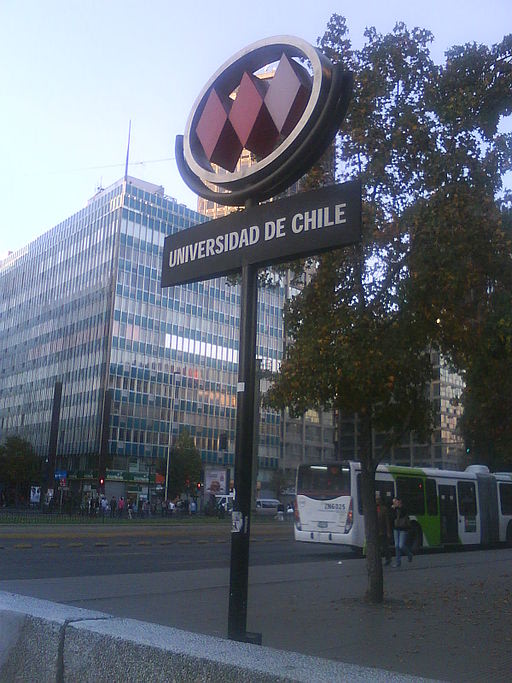
Metro de Santiago is South America's most extensive metro system with 5 lines, 108 stations and 103 kilometres of track making it the second longest in Latin America after that of Mexico City. The metro system serves the city of Santiago, Chile.
[By Mariordo (Mario Roberto Durán Ortiz) (Own work) [By Julián Ortega Martínez [CC-BY-2.0 (http://creativecommons.org/licenses/by/2.0)], via Wikimedia Commons]
Delhi
The Delhi Metro network consists of six lines with a total length of 189.63 kilometres (117.83 mi) with 142 stations of which 35 are underground. It has a combination of elevated, at-grade and underground lines and uses both broad gauge and standard gauge rolling stock. Delhi Metro is being built and operated by the Delhi Metro Rail Corporation Limited (DMRC). The Delhi Metro Rail Corporation has been certified by the United Nations as the first metro rail and rail-based system in the world to get “carbon credits for reducing greenhouse gas emissions” and helping in reducing pollution levels in the city by 630,000 tons (630 Gg) every year.
Photo by Rohit Krishna Kumar (flickr.com) [CC-BY-2.0 (http://creativecommons.org/licenses/by/2.0)], via Wikimedia Commons
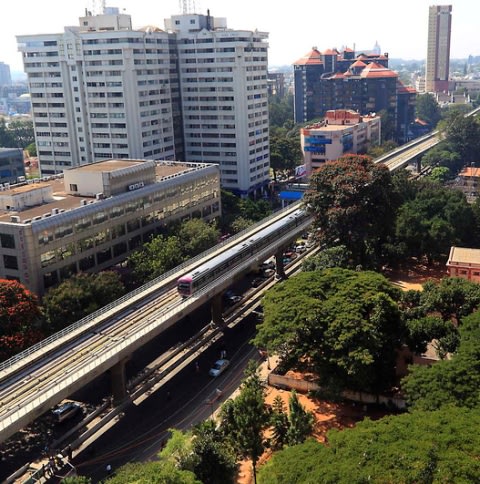
In a major breather for the five million people of Pune, the Maharashtra government has given the green signal for the state's second Metro rail project after Mumbai here, a top official said. Here are some of India's other metro systems:
Bangalore has Namma Metro, which is being built in phases. Phase I of Namma Metro covers a total of 42.30 km and will be completed by the end of 2014. Phase II spans a length of 72.1km.
Photo by Ramnath Bhat [CC-BY-2.0 (http://creativecommons.org/licenses/by/2.0)], via Wikimedia Commons
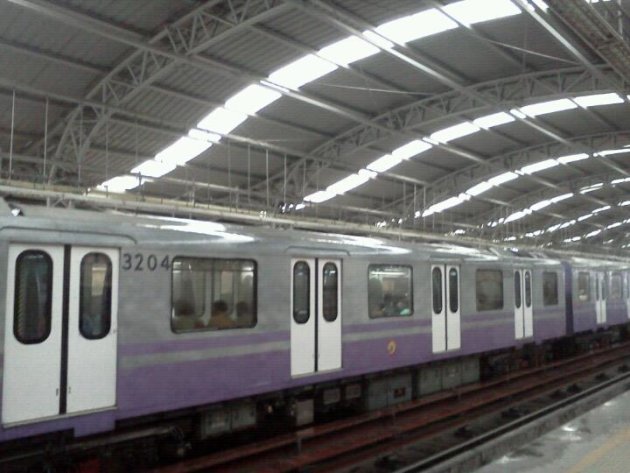
Kolkota
The Kolkata Metro or Calcutta Metro is a mass rapid transit system serving the city of Kolkata and the districts of South 24 Parganas and North 24 Parganas in Indian state of West Bengal. The network consists of one operational line (Line 1) and five lines currently under construction. It was the first such form of transportation in India, opening commercial services in 1984.
Which one is better between Delhi Metro, Kolkata Metro and Bangalore Metro? You tell us by posting a comment below.
Photo by Windrider24584 (Own work) [CC-BY-SA-3.0 (http://creativecommons.org/licenses/by-sa/3.0)], via Wikimedia Commons

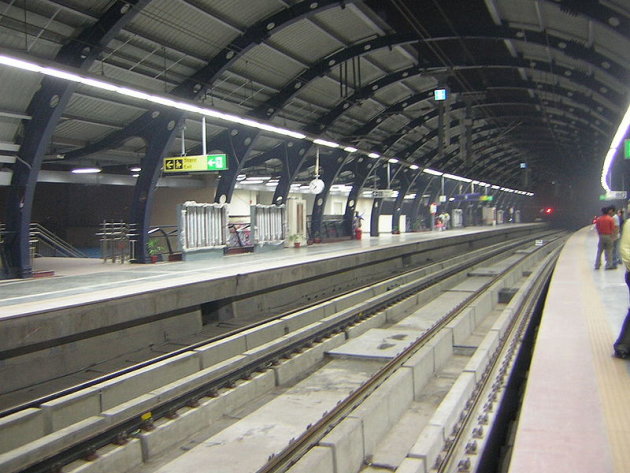
No comments:
Post a Comment